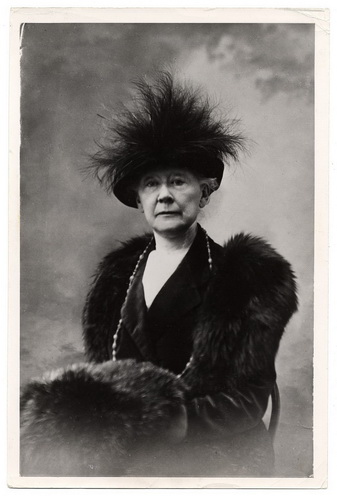 Mary Cassatt, 1914. Frederick A. Sweet research material on Mary Cassatt and James A. McNeill Whistler, 1872-1975. Archives of American Art, Smithsonian Institution. |
Mary Cassatt | |
| Birth Date: May 22, 1844 |
||
| Death Date: June 14, 1926 Artist Gallery |
||
| Mary Cassatt was born in 1844 near Pittsburgh, Pennsylvania, to a prominent family. The Cassatt family spent the early years of Mary’s life in France and Germany. While in Europe, she was exposed to the thriving arts scene.
Once her family had returned to Pennsylvania, Cassatt enrolled in the Pennsylvania Academy of Fine Arts. During this time, she was exposed to feminist ideas and the bohemian behavior of her male peers, such as the infamous Thomas Eakins that would go on to lead the institution. She was determined to become a professional artist, but found the academy to be limiting. During the 1860s, female students were not permitted to use live models–instead confined to referencing casts of the human form. These circumstances lead her to study old masters and the arts on her own, leaving the academy in 1862.
By 1865, Cassatt convinced her parents to let her go to Paris, where she took private lessons from Jean-Léon Gérôme. Women were not allowed to study at the Ecole des Beaux-Arts, so she sought lessons from male students. Daily, she would venture to the Louvre to copy artworks, which required a copyists permit. The museum was a popular meeting place for fellow female artists, as they were also not allowed to attend the cafes which hosted the male avant-garde. In 1868 one of her works, The Mandolin Player, was accepted at the Paris Salon for the first time.
She continued to work in Paris until the Franco-Prussian War interrupted her studies and forced her to return to Philadelphia in 1870. Her father was not supportive of her artist pursuits and refused to provide Mary with art supplies. Determined to continue her career, she searched for patronage until she was finally commissioned by the Archbishop of Pittsburgh to copy works by Correggio. In 1871, the Archbishop paid for Cassatt’s travel to Parma, Italy–the site of his desired works. She spent eight months studying Correggio and Parmigianino. After completing the commission, Cassatt traveled around Europe to study old masters and attracted notice to her own work along the way. In 1874, she settled in Paris and began to regularly show at the Salons. A few years later, her family joined her.
By 1877, the Salon’s interest in her work waned. Around the same time, Edgar Degas invited Cassatt to join the Impressionists, an independent group of artists. She was the only American ever officially associated with the group. Under their influence, Cassatt revised her technique and experimented with her compositions. Degas continually gave her advice and encouraged her to try new mediums, such as pastels and copper engraving.
During the late 1870s and early 1880s, Cassatt’s subjects consisted of her family, the theater, and the opera. After this point, however, she shifted her focus to the mother and child. Her failing eyesight hindered her work after 1900, with Cassatt no longer producing in any medium after 1904. Aside from her work as an artist, Cassatt greatly influenced the collection of old masters and the French avant-garde in both public and private collections within the United States, shooting the nation’s museums into prominence.
|
||


